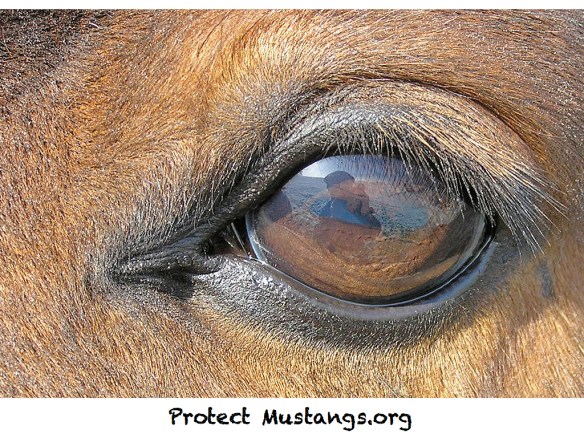Milestone: Protect Mustangs rescues 14 young wild horses from slaughterhouse after BLM roundup
Roundup results in death of 23 American wild horses
SAN FRANCISCO, Ca. (Protect Mustangs)—Against all odds, Mark Boone Junior (Batman Begins & Sons of Anarchy) with Anne Novak, executive director of Protect Mustangs, saved 14 young free-roaming wild horses from slaughter thanks to donations from Alicia Goetz, the Schnurmacher family and others. This unprecedented rescue seems to be the first time American wild horses have been purchased back from a slaughterhouse following a Bureau of Land Management (BLM) roundup. In March, the herd of 41 wild horses was rounded up by the BLM, using taxpayer funds, handed over to the the Wyoming Livestock Board and sold at auction to a Canadian slaughterhouse for human consumption abroad. The BLM claims everything they did was legal.
“If it’s legal then the law needs to change,” states Novak. “Americans love wild horses. They want to make sure they’re protected. Congress knows that and it’s time they represent the public who elected them into office—not interests who want to dispose of them.”
In 2004, former Montana Senator, Conrad Burns, added the Burns amendment to the Appropriations Act of 2005 without any public or Congressional discussion. The Burns amendment overruled many protections in the Wild and Free-Roaming Horses and Burros Act of 1971. From that time forward, “unlimited sales” to slaughter has been legal.
Due to public outcry against selling wild horses for slaughter, the BLM uses middle men who sell the mustangs to the slaughterhouse. This time the scapegoat was the Wyoming Livestock Board, other times it’s men like Tom Davis. The 1,700 wild horses he purchased from the feds have never been accounted for. Advocates believe they went to slaughter in Mexico.
Public outcry over Tom Davis prompted BLM to revise their policy to avoid another fiasco in the future. A change in policy is not a change in law. It’s still legal for the BLM to allow slaughter and exportation of horse meat.
Out of the 41 wild horses rounded up on March 18th and 19th near Greybull, Wyoming, 37 were quickly sold to the slaughterhouse. 4 foals were saved by the co-owner of the auction house and later transferred to advocates. Protect Mustangs jumped in later on April 2nd to save the other 37 wild horses from being slaughtered. Chances were slim they would find any alive.
Boone and Novak quickly learned that a group of 23 mares and stallions had already perished. The duo managed to prevent the last 14 orphaned wild youngsters from going to slaughter. The survivors are called the WY14. These wild horses range from 8 months to 2 years old.
“It’s a miracle we were able to get them out,” says Boone. “I can’t believe the EPA, in 2012, designated our wild horses as pests—especially when the horse originated in America.”
“American free-roaming wild horses are a returned-native species who contribute to the thriving natural ecological balance,” explains Novak. “They have value on the range because they reduce the risk of wildfires, reverse desertification and with climate change that’s really important.”
For generations, free-roaming wild horses lived in family bands north of Greybull and close to a former herd area called Dry Creek/Foster Gulch that was zeroed out in 1987 to make room for extractive uses such as bentonite mining.
In 1971 there were 339 wild herds in the West, but now there are only 179 left in all 10 western states combined.
Today the Bighorn Basin is preparing for another extractive boom but this time it’s about fracking for oil and gas with right-of-way corridors to service those fields. Is this why the small herd of 41 wild horses was suddenly ripped off public land?
The feds maintain the 41 wild horses were not wild even though they lived wild and free for generations.
Curiously reports have surfaced that a bucking string made up of wild mustangs was turned out by their original owner more than 40 years ago. If it could be proven these wild horses were on public land in 1971, they would be protected under the Free Roaming Wild Horse and Burro Protection Act. The BLM claims the horses have been there for only 40 years not 43.
“It’s horrible for tourism that the State of Wyoming would allow this sort of thing,” states Boone. “The beauty of the Bighorn Basin is like no other place on earth but it won’t be the same now that these wild horses are gone.”
“We are grateful we saved the WY14.” says Novak. “Now we need financial help to bring them to California and start their new lives.”
Go to www.ProtectMustangs.org to help the WY14 with your donation.
Reprinted from Horseback Magazine











